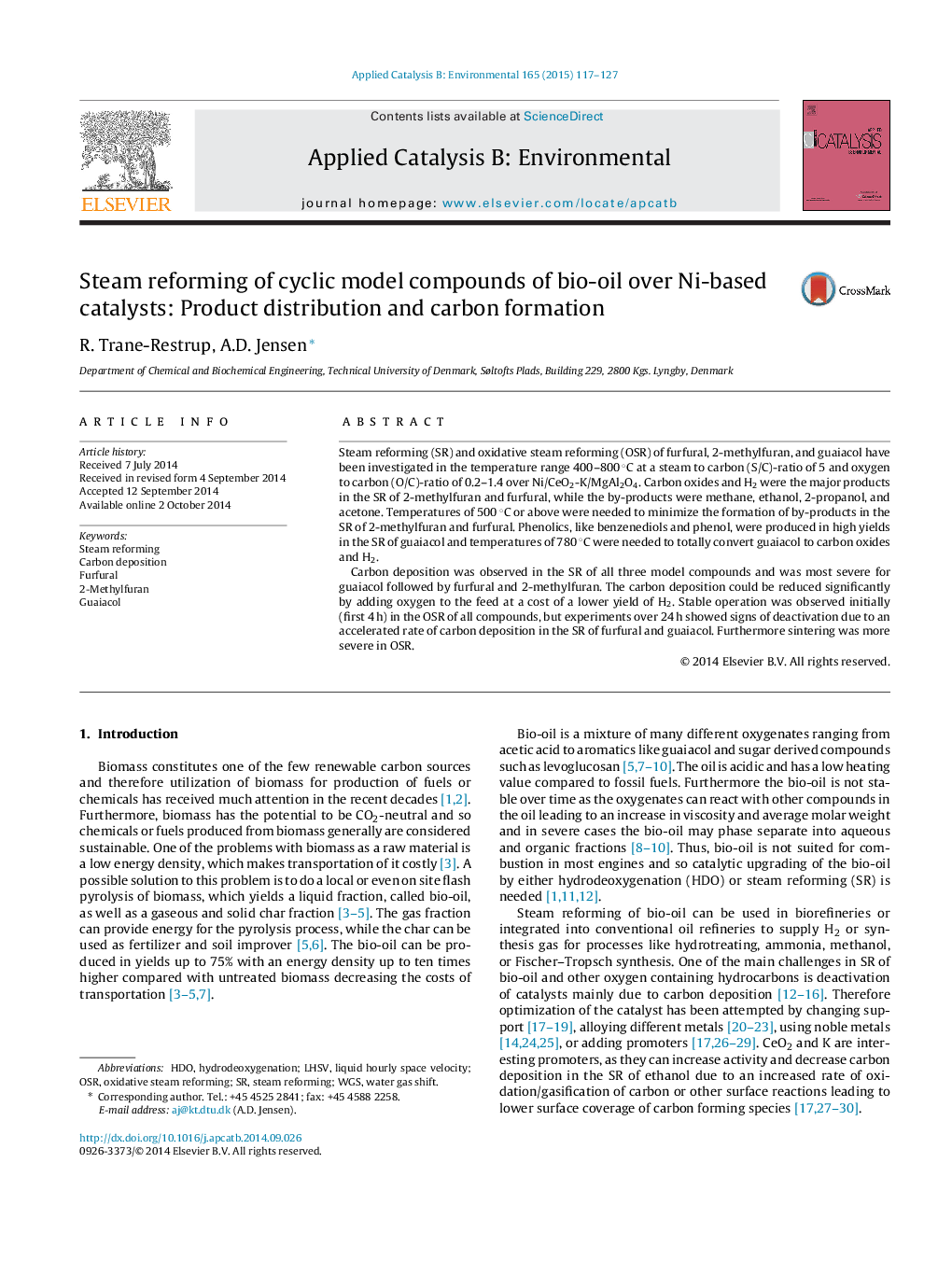| Article ID | Journal | Published Year | Pages | File Type |
|---|---|---|---|---|
| 45541 | Applied Catalysis B: Environmental | 2015 | 11 Pages |
•SR and OSR of 2-methylfuran, furfural, and guaiacol were investigated at 400–800 °C, S/C = 5, O/C = 1.2.•Guaiacol was the most difficult compound to convert to synthesis gas.•Increasing the O/C-ratio increased conversion and decreased carbon deposition and yield of H2.•Oxidative SR is needed for stable operation with low rates of carbon deposition.•Sintering could be a problem under OSR.
Steam reforming (SR) and oxidative steam reforming (OSR) of furfural, 2-methylfuran, and guaiacol have been investigated in the temperature range 400–800 °C at a steam to carbon (S/C)-ratio of 5 and oxygen to carbon (O/C)-ratio of 0.2–1.4 over Ni/CeO2-K/MgAl2O4. Carbon oxides and H2 were the major products in the SR of 2-methylfuran and furfural, while the by-products were methane, ethanol, 2-propanol, and acetone. Temperatures of 500 °C or above were needed to minimize the formation of by-products in the SR of 2-methylfuran and furfural. Phenolics, like benzenediols and phenol, were produced in high yields in the SR of guaiacol and temperatures of 780 °C were needed to totally convert guaiacol to carbon oxides and H2.Carbon deposition was observed in the SR of all three model compounds and was most severe for guaiacol followed by furfural and 2-methylfuran. The carbon deposition could be reduced significantly by adding oxygen to the feed at a cost of a lower yield of H2. Stable operation was observed initially (first 4 h) in the OSR of all compounds, but experiments over 24 h showed signs of deactivation due to an accelerated rate of carbon deposition in the SR of furfural and guaiacol. Furthermore sintering was more severe in OSR.
Graphical abstractFigure optionsDownload full-size imageDownload as PowerPoint slide
